中級スキーの腕前をレベルアップするための最高のオールマウンテンスキーをお探しですか?ポイントはこれです:Snowfeetのスキーブレードやショートスキーのような短いスキーは操作が簡単で疲れにくく、上達も早いです。NordicaやSalomonのような長くて重いスキーとは異なり、Snowfeetのコンパクトなデザインはターンや操作を格段に簡単にし、自信をつけるのに最適です。
ここで簡単にまとめます:
- Snowfeet Skiblades 65 cm ($450): 非常に機敏で、タイトなターンや楽しいランに最適。遊び心のあるスキーと自信を育むのに理想的です。
- Snowfeet Skiblades 99 cm ($490): バランスの取れたコントロールと反応性。混合地形に適したオールラウンドな選択肢です。
- Snowfeet Short Skis 120 cm ($690): 安定性を高めるために少し長めで、フルサイズのスキーへの移行に最適です。
- Nordica Enforcer 94 ($629.95): 速度重視ですが、中級者には扱いが難しいです。
- Salomon QST 92 ($549.95): 高速で安定していますが、初心者にはやや厳しいです。
- Völkl M7 Mantra ($779.93): エキスパート向けに設計され、正確な技術を要求します。
中級スキーヤーなら、Snowfeetの短いモデルはゲームチェンジャーです。使いやすく、さまざまな条件でよく機能し、スキーをより楽しくします。苦労せずにゲレンデを楽しみたいなら、Snowfeetを選びましょう。
2024年最高のオールマウンテンスキー - レビュー
1. Snowfeet* Skiblades 65 cm
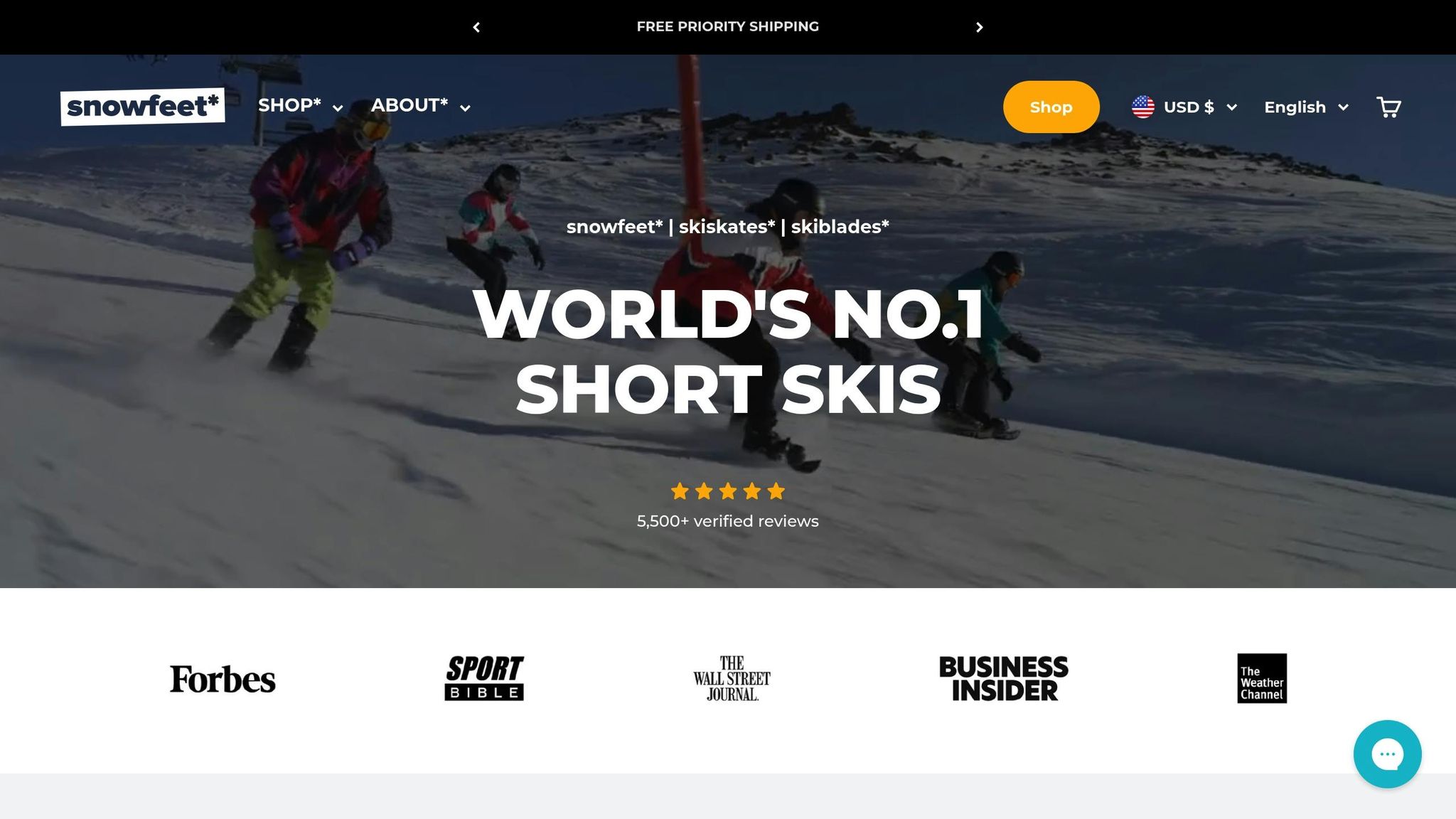
Snowfeet* Skiblades 65 cm は、特に中級スキーヤーにとって機敏で楽しいものを求めるオールマウンテンスキーの中で際立った選択肢です。長さはわずか26インチ(65cm)で、従来のスキーの常識を覆します。価格は450ドルで、速度や安定性よりも機敏さと使いやすさに重点を置いています。彼らの特徴を分解すると、鋭い操作性、コントロールされた安定性、多様な地形対応力、そして初心者に優しい学習曲線が挙げられます。
操作性
コンパクトな65cmの長さが、このスキーブレードを驚くほど機敏にします。スイングウェイトが軽減され、非常にタイトなターン半径を持つため、素早いピボット、エッジからエッジへの切り替え、ツリーランやモーグル、混雑した整地斜面のような狭いスペースのナビゲートに最適です。速度と安定性を重視する長いスキーとは異なり、これらは精度が求められる狭い場所でのパフォーマンスに特化しています。
センターマウント設計は応答性を高め、バランスとコントロールを向上させます。このセットアップは多くの伝統的なスキーに見られる先端とテールのレバレッジを排除し、中級者がターンを決めやすくします。8~10メートル未満のターン半径で、東海岸の木々をかわしたり、土曜の朝の混雑した斜面を縫うように滑ったりする際に、これらのスキーブレードはほとんど本能的に操作できます。
安定性
正直に言うと、65 cmのこれらのスキーブレードは、氷の斜面を猛スピードで滑り降りるために作られていません。短いエッジはグリップと減衰が少ないため、コントロールされた中速の滑走に最適です。硬く締まった氷雪面ではチャタリングや安定感の低下を感じるかもしれませんが、スピードを抑え、滑らかで高いエッジターンに集中することでコントロールを維持できます。
これらのスキーブレードは整地された斜面や柔らかい雪で輝き、そのデザインは力任せの安定性よりも扱いやすさを優先しています。スピードを追求するよりも技術に集中したい中級者に最適です。
多用途性
多用途性に関して言えば、65 cmのスキーブレードは中程度の条件で万能選手です。整地されたコース、短いジャンプやスピンのあるテレインパーク、狭い木立の間、さらにはモーグルや春のシャバ雪でも優れています。その機敏さは、伝統的なスキーのかさばりや重さなしに、技術的な地形に挑む中級者の自信を高めます。
とはいえ、すべてのシナリオに適しているわけではありません。高速のダウンヒルや深いパウダーを狙うなら、これらは最適ではありません。しかし、それ以外のすべて、特に素早いターンとコントロールが重要な場面では、最高に楽しいです。
習得の難易度
これらのスキーブレードの最も素晴らしい点の一つは、多くの中級者がどれほど早く適応できるかということです。低いスイングウェイトと簡単なピボット操作により使いやすいですが、高速時の前後サポートの減少と短い有効エッジに慣れるには若干の学習曲線があります。ほとんどのスキーヤーは、これらのスキーブレードが即座にフィードバックを提供するため、数回の滑走で自分のリズムを見つけます。
スムーズな移行のために、ガーランド、ショートラディアスターン、ピボットスリップ、片足バランス練習などのドリルを試してみてください。これらはエッジコントロールと体のポジショニングを微調整するのに役立ちます。さらに、長いスキーで使うスキルを補完する素晴らしい方法であり、これらのスキーブレードは楽しいだけでなく、全体的な技術向上のための確かなツールでもあります。
2. Snowfeet* Skiblades 99 cm
Snowfeet* Skiblades 99 cmは安定性と操作性を兼ね備えており、中級スキーヤーにとって頼もしい選択肢です。39インチ(99 cm)の長さで価格は490ドル、短いスキーの遊び心と長いスキーの安定感のちょうど良いバランスを提供します。65 cmモデルの機敏さをベースに、このバージョンはさらに安定性を加え、変化に富んだ地形でも楽しさを損なうことなく優れた選択肢となっています。
操作性
99 cmのこれらのスキーブレードは機敏さとコントロールの絶妙なバランスを実現しています。超短いスキーと比べてわずかに長い長さはターン半径を狭め、整備されたトレイルで滑らかなアークを描くためのカービングレバレッジを向上させます。混合地形で方向を変える必要がある時も素早く反応します。センターマウントのおかげで、トランジションは予測可能でシームレスに感じられます。
安定性
長さが増すことで雪とのエッジ接触面が増え、硬く締まった雪や氷の上でのグリップ力が向上します。中級スキーヤーにとって、この追加された安定性は自信を高める要素であり、限界に挑戦する時にも役立ちます。中速でクルーズする時もスピードを上げる時も、これらのスキーブレードは安定しており、硬い雪での振動を抑え、変化するコンディションにも楽に対応します。
多用途性
整備されたコースから急斜面、さらには軽いパウダーまで、99 cmのスキーブレードはすべてに対応します。キビキビとした素早いターンに最適でありながら、長いカービングアークも得意です。テレインパークを探検したり、整備されたコースをクルーズしたり、自然のバンプを縫うように滑ったり、これらのスキーブレードはあなたのスタイルに合わせて適応し、さまざまな速度で滑ることを可能にします。
習得の難易度
中級スキーヤーはこれらのスキーブレードに簡単に慣れるでしょう。伝統的なスキーからの移行なら、99 cmの長さは馴染みやすく、65 cmの超短いモデルよりもスムーズに移行できます。長いスキーと比べてターンの開始が速く感じられるかもしれませんが、安定性が加わることですぐに自信がつきます。毎回の滑走で楽しみながら技術を向上させる素晴らしい選択肢です。
3. Snowfeet* ショートスキー 120cm
Snowfeet* Short Skis 120 cmはSnowfeet*ラインナップの中で最も長く、価格は690ドルです。47インチ(120 cm)で、機敏さと伝統的なスキーに期待される安定性のバランスを取っています。これが彼らの際立った特徴です:
操作性
120 cmでも、これらのスキーは通常160〜180 cmの標準的なオールマウンテンスキーよりはるかに機敏です。短い長さは素早いエッジの切り替えを可能にし、タイトなターンも楽々こなせます。混雑した斜面を縫うように滑ったり、整備されたコースで滑らかなS字ターンを描いたりする時も、これらのスキーは正確で反応が良い動きを保ちます。雪の状態が変わった時にラインを即座に調整するのにも最適です。
安定性
これらのスキーは機敏でありながら、安定性を犠牲にしません。120 cmの長さは硬く締まった雪や氷の上でしっかりとしたエッジグリップを提供し、コンディションが固い時でも自信を持って滑れます。長めのプラットフォームは深雪での浮力も向上させるため、さまざまな地形をコントロールを失うことなく楽しめます。スピードを上げる時も急な斜面に挑む時も、これらのスキーはフルレングスのスキーのかさばりを感じさせず、安定した安心感のある滑りを実現します。
多用途性
整備されたトレイルから混合雪のコンディションまで、これらのスキーはすべてに対応できます。圧雪されたコースでは滑らかにカービングし、変化する雪質も楽にこなし、軽いパウダーでもまずまずのパフォーマンスを発揮します。120cmの長さは、ゆったりとしたクルージングからよりアグレッシブなスキーまで対応可能で、一日の中でスタイルを自由に変えることができます。
習得の難易度
短めのスキーが初めての方には、120cmモデルがスムーズな移行を提供します。長さは安定感を感じられるほど十分でありながら、短いスキーのより速く遊び心のある感覚も体験できます。ほとんどのスキーヤーは数回滑るうちに適応し、ターンのコントロールがしやすくなり、様々な技術を試すことが楽になります。Snowfeet*に興味はあるけど、いきなり短いモデルに飛び込むのは不安という方に最適な選択です。
4. Nordica Enforcer 94
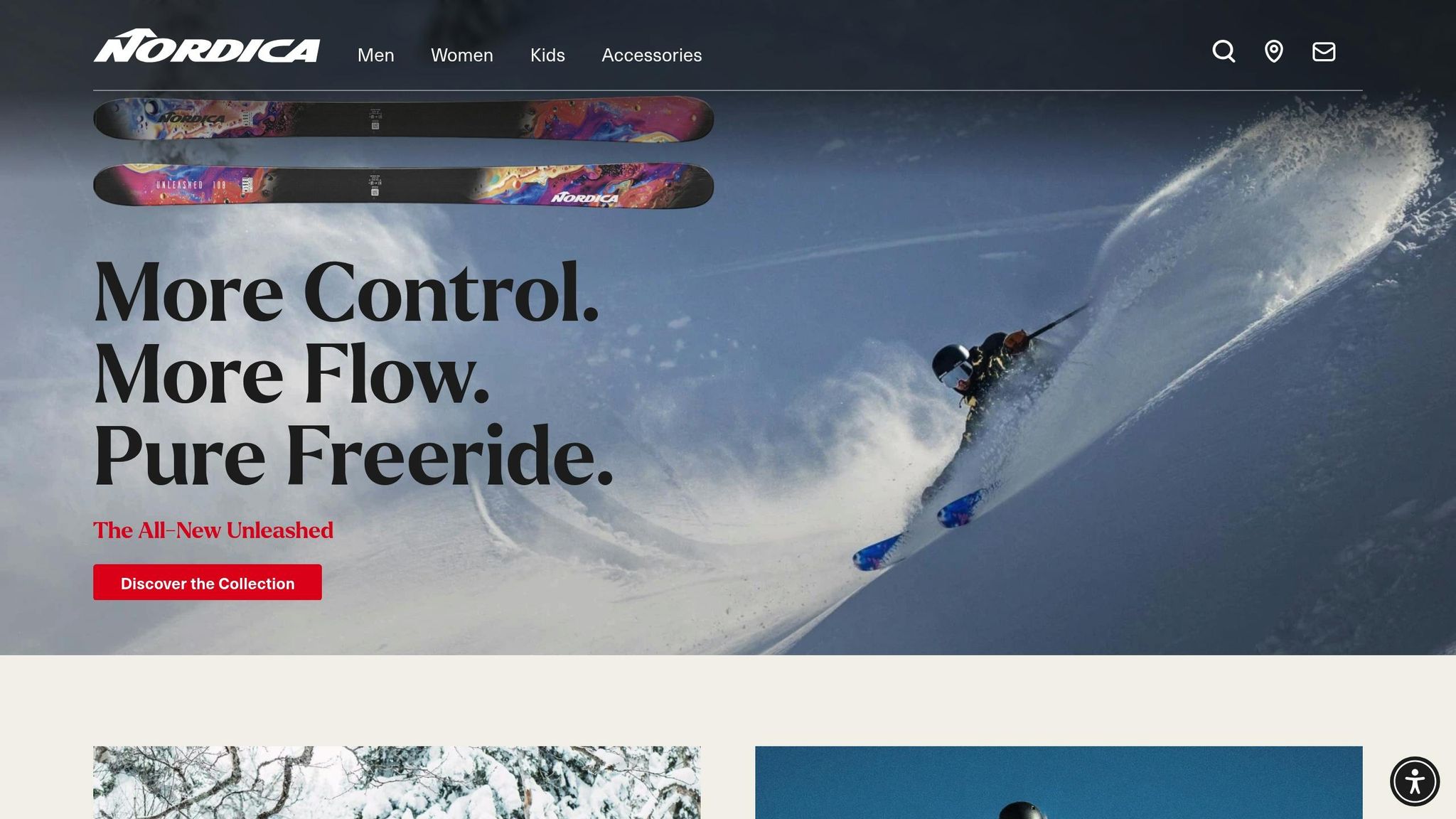
Nordica Enforcer 94はクラシックなオールマウンテンスキーとして際立っており、長めのプロファイルで様々な地形でしっかりとした安定性を提供します。しかし、コンパクトで機敏なSnowfeet*スキーと比べると、その操作感の違いは明らかです。
操作性
Enforcer 94の長い長さはより広いターン半径を必要とし、素早く鋭いターンにはあまり向いていません。混雑したゲレンデや狭いトレイルではこれが課題になることがあります。熟練スキーヤーはこれに慣れるかもしれませんが、中級者は正確なターンを刻むのにより多くの努力が必要と感じるかもしれません。それに対して、Snowfeet*の短くコンパクトなデザインは、こうした状況でずっと反応が良く扱いやすいです。
安定性
Enforcer 94はエッジグリップと安定性に優れており、特に高速時にその力を発揮します。自信を持って山を駆け下りたいスキーヤー向けに作られています。しかし、このスピードと安定性へのこだわりは機動性を犠牲にしています。Snowfeet*のような短めのスキーの遊び心と寛容さとは異なり、Enforcer 94はより扱いやすくコントロールしやすいものを求める中級者には少し威圧的に感じるかもしれません。
多用途性
このスキーは整備されたトレイルでもオフピステの地形でもよく機能しますが、その長さは素早い調整よりも長く滑らかなターンに向いています。さらに、大きなサイズは持ち運びや輸送の面であまり便利とは言えません。一方、Snowfeet*はコンパクトで軽量なので、ゲレンデ内外での扱いがとても楽で、中級者には間違いなく喜ばれるでしょう。
習得の難易度
中級スキーヤーにとって、Enforcer 94の長めのデザインは少しハードルが高いかもしれません。習得にはより多くの努力と技術が必要で、進歩が遅く感じたり、学習が苦痛に思えることもあります。それに比べて、Snowfeet*はよりスムーズで直感的な体験を提供します。使いやすいデザインにより、スキーヤーはギアに苦戦するのではなく、自信をつけて楽しむことに集中できます。
sbb-itb-17ade95
5. Salomon QST 92
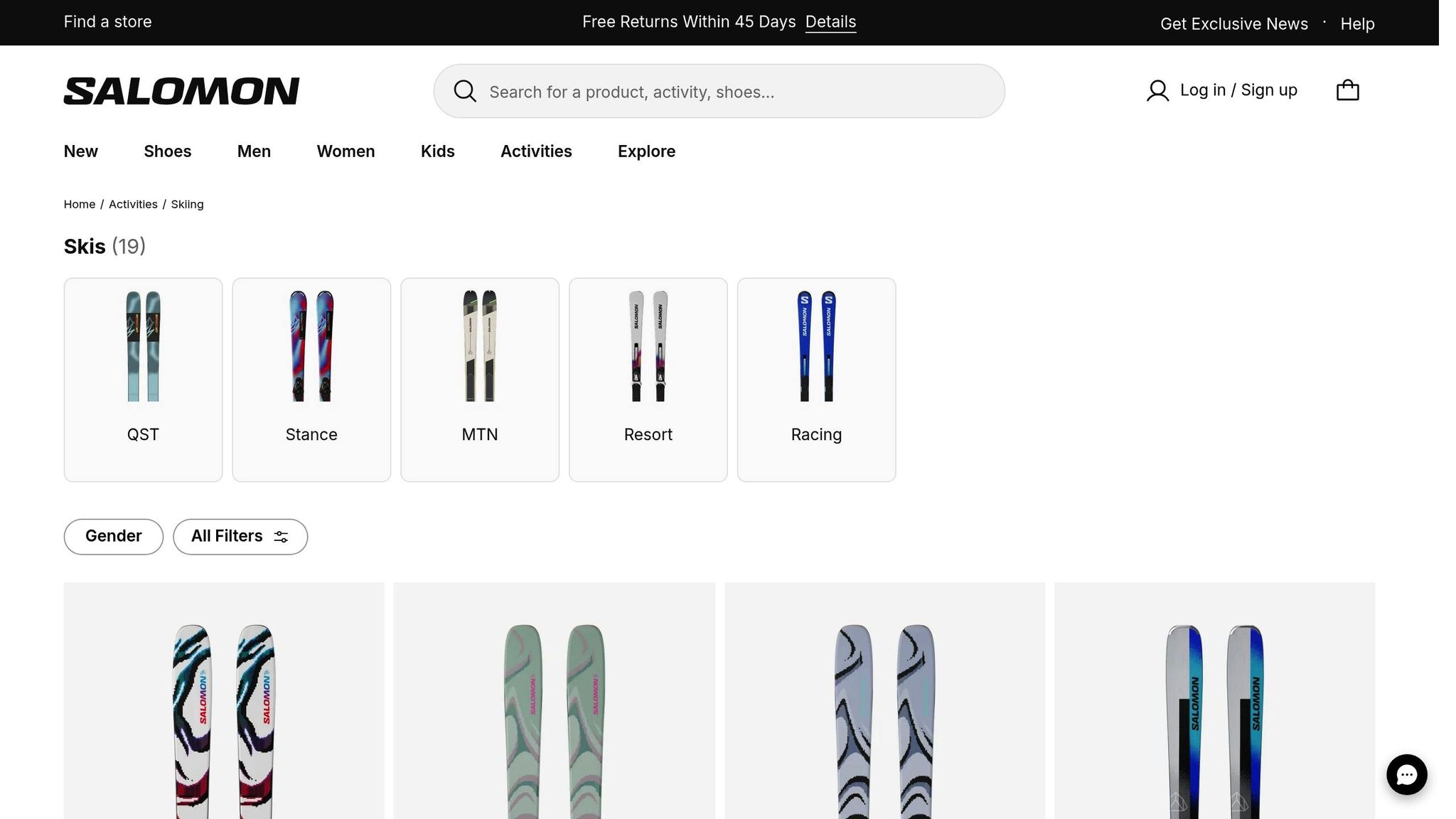
Salomon QST 92はクラシックなオールマウンテンスキーのデザインを踏襲しており、スキー界で定番となっている長いプロファイルを特徴としています。様々な地形に対応できるように作られていますが、Snowfeet*と比較すると、中級者にとっていくつかの独特な課題が浮かび上がります。
操作性
伝統的な長さのQST 92はより広いターン半径を持ち、スキルをまだ磨いている中級者には少し扱いにくく感じるかもしれません。素早くキビキビしたターンやモーグルの間を縫う動きは、短いスキーに比べてより多くの努力と計画を必要とします。このデザインは滑らかで大きなターンに向いており、学び始めの人にとってより自然で自信を高める速く反応的な動きとは対照的です。
一方で、Snowfeet*のスキーは即時の反応性が特徴で、はるかに操作しやすいです。この敏捷性の違いは、中級スキーヤーがQST 92で直面する主要なハードルの一つを浮き彫りにします。
安定性
QST 92の安定性は両刃の剣です。長いエッジ接触は高速時に優れたグリップを提供し、経験豊富なライダーには素晴らしいですが、バランスをまだ磨いている中級者には許容度が低く感じられます。長いエッジは正確なコントロールを要求し、山を高速で滑り降りるのではなく、適度な速度で自信をつけるためにクルーズしているときには威圧的に感じることがあります。
基本的に、QST 92はスピードで輝きますが、基礎をまだ習得中のスキーヤーには扱いにくく、学習過程に余分な難しさを加えることがあります。
多用途性
SalomonはQST 92を様々な雪質に対応できるスキーとして宣伝しており、整備されたトレイルや軽いパウダーではまずまずの性能を発揮します。しかし、その92mmのウエスト幅は長くしっかりしたターンに適しており、混合または予測不可能な地形での適応性は制限されます。
もう一つ考慮すべきは輸送です。QST 92のような伝統的なスキーはルーフラックや追加の収納スペースが必要ですが、Snowfeet*はコンパクトで荷物に収まります。これにより、特に頻繁に旅行するスキーヤーにとってSnowfeet*は持ち運びがずっと簡単になります。
習得の難易度
これらの設計要素は、QST 92の習得曲線を急にします。Snowfeet*のユーザーフレンドリーなデザインとは異なり、QST 92はクリーンなターンを実行するために正確な体重移動とタイミングを要求します。ミスに対する許容度が低いため、自信をつけるのに時間がかかることがあります。スキルをまだ発展させている人にとっては、これは楽しいスキーの日よりも挑戦のように感じるかもしれません。
QST 92のような伝統的なスキーは、スキーヤーがギアに合わせて技術を調整する必要があり、中級者にとって不必要なハードルを生むことがあります。スキル向上に集中しつつ楽しみたい場合、この余分な複雑さが楽しさを損なうかもしれません。
6. Völkl M7 Mantra

Völkl M7 Mantraは伝統的なスキー職人技の典型例です。177cmモデルは$779.93と高価格帯で、明確にエキスパートスキーヤーをターゲットにしています。しかし中級者にとっては、先に紹介したよりユーザーフレンドリーなSnowfeet*ラインナップと比較すると、両刃の剣のように感じられるかもしれません。
操作性
177cmの長さを持つM7 Mantraは、コンパクトで機敏なSnowfeet*とは全く異なる乗り心地を提供します。そのマルチラジアスサイドカットは精密さを追求しており、テストデータによると平均16メートルのターンが可能です。1本あたり2,075グラムと軽くはなく、素早い方向転換は少し大変です。より小さく機敏なギアで軽快に動き回ることに慣れていると、このスキーは扱いにくい獣のように感じるかもしれません。
安定性
M7 Mantraが機敏さに欠ける分、高速安定性で補っています。長い有効エッジのおかげで、硬い雪面でも自信を持ってグリップし、ダウンヒルでの高速走行も安定します。しかし、ここに落とし穴があります:多くの中級スキーヤーが最も快適に感じる中速域では、寛容さに欠けることがあります。40マイル/時を超えると、一部のテスターは少し「ピクピク」する感覚を指摘しました。つまり、スピードを追求するエキスパートには輝きますが、中級者には文字通り緊張感をもたらすかもしれません。
多用途性
理論上はM7 Mantraは多用途に見えますが、実際には整備されたコースを念頭に設計されています。オンピステ70%、オフピステ30%のバランスで、硬い雪面では優れていますが、多様なコンディションでは苦戦します。その硬さと長いエッジは、モーグルや狭いトレイルのようなタイトな場所での素早く遊び心のある動きには向いていません。特定の環境で力を発揮するスキーですが、中級者には窮屈に感じられるかもしれません。
習得の難易度
中級スキーヤーにとって、M7 Mantraの最大の障害はその急な習得曲線です。正確な技術を要求され、自信をつけている途中の方には敷居が高く感じられるかもしれません。より直感的で親しみやすい体験を提供するSnowfeet*とは異なり、M7は扱いが難しく感じることがあります。スキルを伸ばすどころか、その要求に追いつくのに苦労するかもしれません。リズムを掴みかけている方にとっては、このスキーはパートナーというよりも挑戦のように感じられるでしょう。
比較:長所と短所
中級スキーヤーとして適切なスキーを選ぶ際には、さまざまな選択肢を比較することが役立ちます。Snowfeet*製品と伝統的なロングスキーを並べて見ると、特に使いやすさと多用途性の面で明確な違いが見えてきます。
こちらは中級スキーヤー向けのSnowfeet*スキーと人気の伝統的なモデルの比較一覧です:
| スキーオプション | 長さ | 価格 | 操作性 | 習得の難易度 | 多用途性 | おすすめ用途 |
|---|---|---|---|---|---|---|
| Snowfeet* Skiblades 65 cm | 65 cm | $450から | 非常に機敏で、素早く鋭いターンに最適 | 非常に初心者に優しい | パーク、整備されたコース、狭いスペースに最適 | 自信をつける;遊び心のあるスキー |
| Snowfeet* Skiblades 99 cm | 99 cm | $490から | バランスの取れた反応性で機敏 | 初心者から中級者への移行に理想的 | さまざまな条件でよく機能します | オールラウンドな中級者向けの進歩 |
| Snowfeet* Short Skis 120 cm | 120 cm | $690 | 安定しつつも操作性が高い | より長いスキーセットアップへのスムーズなステップ | さまざまな地形を楽にこなす | 伝統的なスキーへの移行期に |
| Nordica Enforcer 94 | 172 cm | $629.95 | 整備された斜面での高速性能に優れるが、狭い場所での機動性は劣る | 精密さが求められ、新しいスキーヤーには寛容さが少ない | よく整備された斜面に最適 | より経験豊富な中級者向け |
| Salomon QST 92 | 172 cm | $549.95 | 高速でのコントロールを目的とし、高度な技術を必要とする設計 | 洗練された技術を持つスキーヤーに適している | 特定の条件に最適化されており、広範囲の使用には向かない | 上級スキーヤー向け |
| Völkl M7 Mantra | 177 cm | $779.93 | 整備されたコースでの高速走行と精密さのために作られた | 高度なスキルと経験を要求 | 管理された整地環境に集中 | 高速でパフォーマンス重視のスキーヤー |
Snowfeet*スキーは寛容で使いやすい設計が特徴で、自信をつけるのに最適です。Völkl M7 Mantraのような従来のスキーはスピードと精度に特化していますが、より高いスキルレベルと技術的な専門知識が必要です。
この表は、Snowfeet*のコンパクトで軽量なデザインが中級スキーヤーのスキルをより速く伸ばし、スロープでの楽しさを維持するのに役立つことを示しています。長くて複雑なスキーを扱う難しさなしに上達したい方に最適な選択肢です。
圧倒されることなくスキルを伸ばしたい中級者にとって、Snowfeet*スキーは賢く親しみやすい道を提供します。
最終的なおすすめ
Snowfeet*スキーは使いやすさと操作性で際立っており、中級スキーヤーにとって素晴らしい選択肢です。自信をつけたい、スキルを向上させたい、または最終的に長いスキーに移行したい方にも対応するオプションがあります。以下は選択の参考になる簡単な概要です:
自信をつけたい方には: 450ドルのSnowfeet Skiblades 65 cm*はタイトなターンや難しいコースに最適です。コンパクトなサイズで非常に機敏なので、かさばる装備に苦労することなく楽しむことに集中できます。
オールラウンドな選択肢として: 安定性と遊び心のバランスを求めるなら、Snowfeet Skiblades 99 cm*(490ドル)をチェックしてください。さまざまな地形に対応でき、活発で反応の良い感触を保ちます。
将来的に長いスキーを検討しているなら: Snowfeet Short Skis 120 cm*(690ドル)は素晴らしいステップアップです。中級者にとって扱いやすく、従来の長いスキーに必要な技術にスムーズに慣れるのに役立ちます。
今は従来の長いスキーは控えましょう。 Nordica Enforcer 94、Salomon QST 92、Völkl M7 Mantraのようなモデルは優れていますが、多くの中級者にはまだ要求される精度と高度なスキルが必要です。
Snowfeet*の特別な点は何ですか?遊び心のあるデザインと実用的なパフォーマンスを組み合わせており、スキルを磨きながら本当にスロープでの時間を楽しむための道具を提供します。さらに、コストパフォーマンスも優れており、無理なくレベルアップしたいスキーヤーにとって賢い投資です。
よくある質問
なぜSnowfeet skibladesはスキル向上を目指す中級スキーヤーにとって従来のスキーより優れた選択肢なのでしょうか?
Snowfeet skibladesは中級スキーヤーにとって素晴らしい選択肢です。通常65cmから120cmの短めの長さと軽量設計により、扱いやすさが抜群です。このデザインは、従来の長いスキーに比べてターンを決めやすく、自信をつけやすく、スキルをより早く磨くのに役立ちます。長いスキーは時に扱いにくく、上達途中の方には重く感じることがあります。
Snowfeet skibladesの特徴は、速度や安定性だけでなく、コントロールと多用途性に重点を置いていることです。コンパクトなサイズは、整備されたトレイルを滑る時も、より狭く技術的な場所を縫う時も理想的です。レベルアップを目指すスキーヤーにとって、これはフラストレーションが少なく、スムーズな上達への道を意味します。
Snowfeet skibladesが伝統的な長いスキーと比べて、異なる地形に挑む中級者にとって優れている理由は?
Snowfeet skibladesは中級者が斜面でよりダイナミックで楽しい時間を過ごせるように作られています。短い長さ(通常25〜47インチ)で扱いやすく、パウダーやオフトレイル、バックカントリーのような難しい場所でも鋭いターンと優れたコントロールが可能です。その機敏さは自信を高め、スキーをよりエキサイティングにします。
さらに、彼らの軽量でコンパクトなデザインはゲームチェンジャーです。疲れにくくなり、山での時間を長く楽しめます。速度と安定性に重点を置く伝統的な長いスキーとは異なり、Snowfeet skibladesは柔軟性と扱いやすさが特徴です。自信とスタイルを持って山を探検したいなら理想的です。
Snowfeet skibladesは伝統的なスキーに移行しようとするスキーヤーにとって良い選択肢ですか?
はい、Snowfeet skibladesは自信を高め、スキルを磨いてから伝統的なスキーに移行したいスキーヤーにとって素晴らしい選択肢です。短い長さと軽量設計のおかげで、標準的なスキーに比べて扱いやすく操作も簡単です。これは特に中級者やスノーボードからスキーに切り替える人に魅力的です。Snowfeet skibladesなら、バランス、ターン、技術を様々な地形でマスターすることに集中でき、重い装備に圧倒されることはありません。
とはいえ、Snowfeet skibladesは中速で短い斜面で最も輝きます。高速で長距離の滑走を目指すなら、安定性とパフォーマンスを求める伝統的なスキーの方が適しているかもしれません。しかし、スキルアップと多用途なオールマウンテンの楽しみを追求するなら、Snowfeet skibladesは素晴らしい選択肢です。





















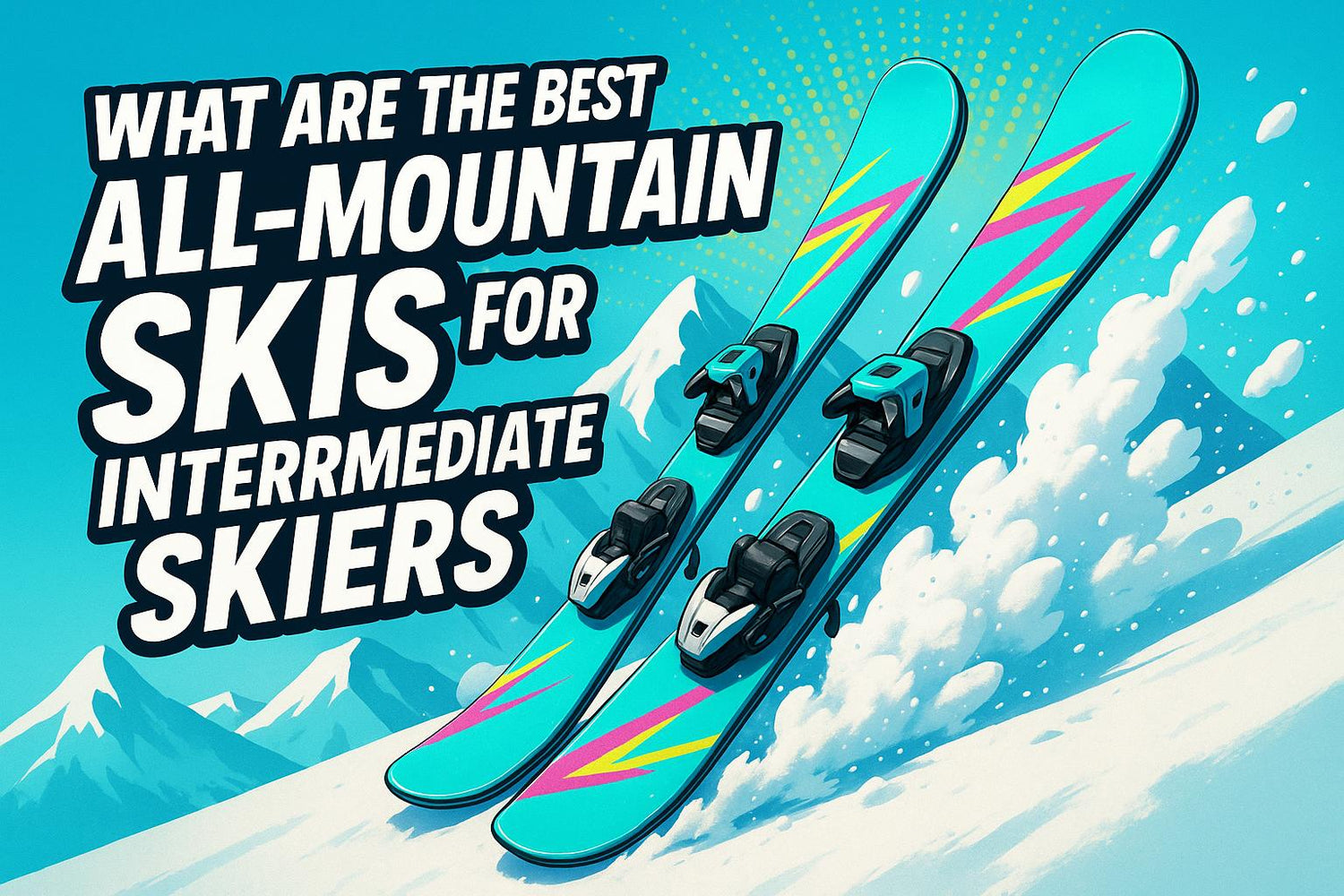
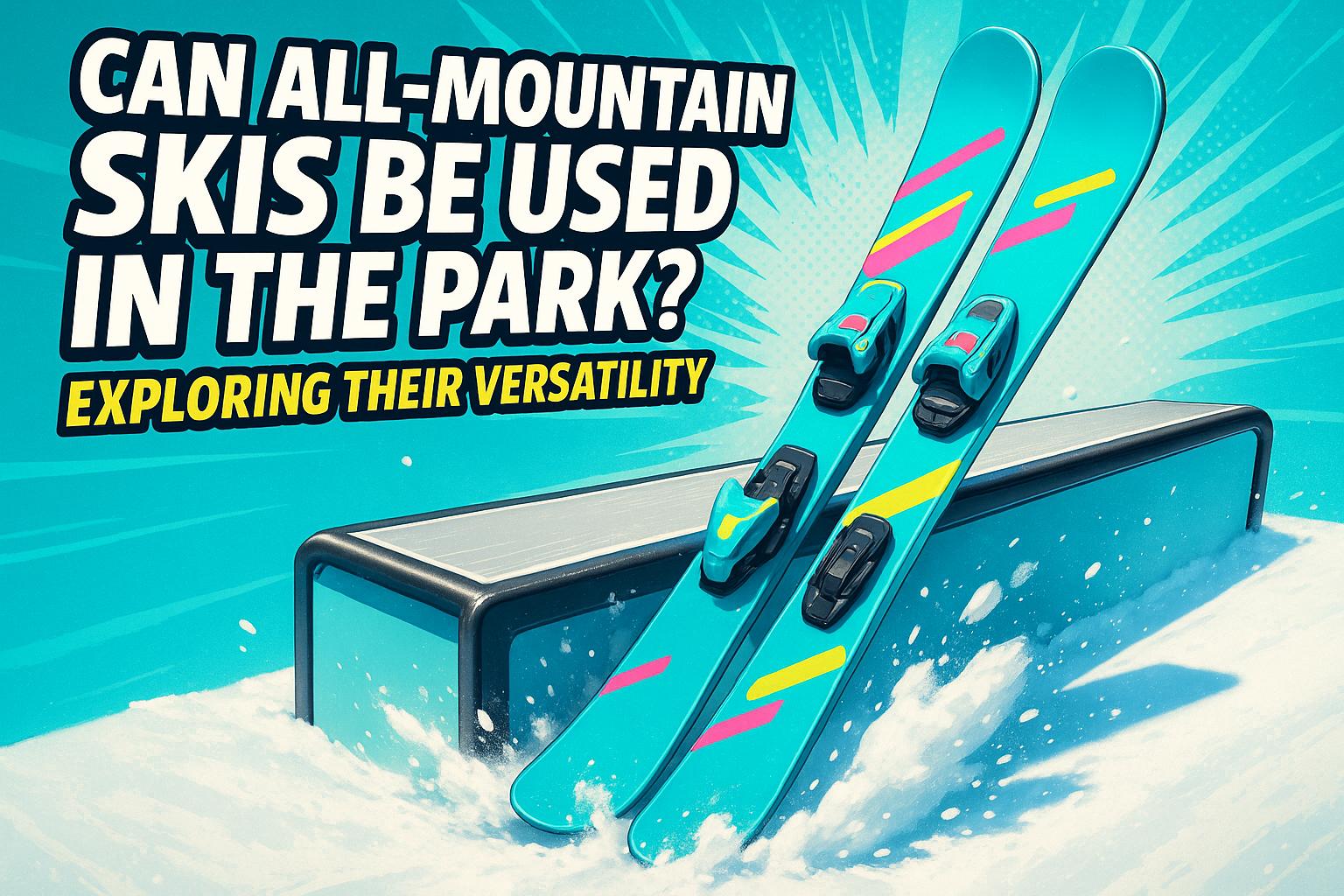
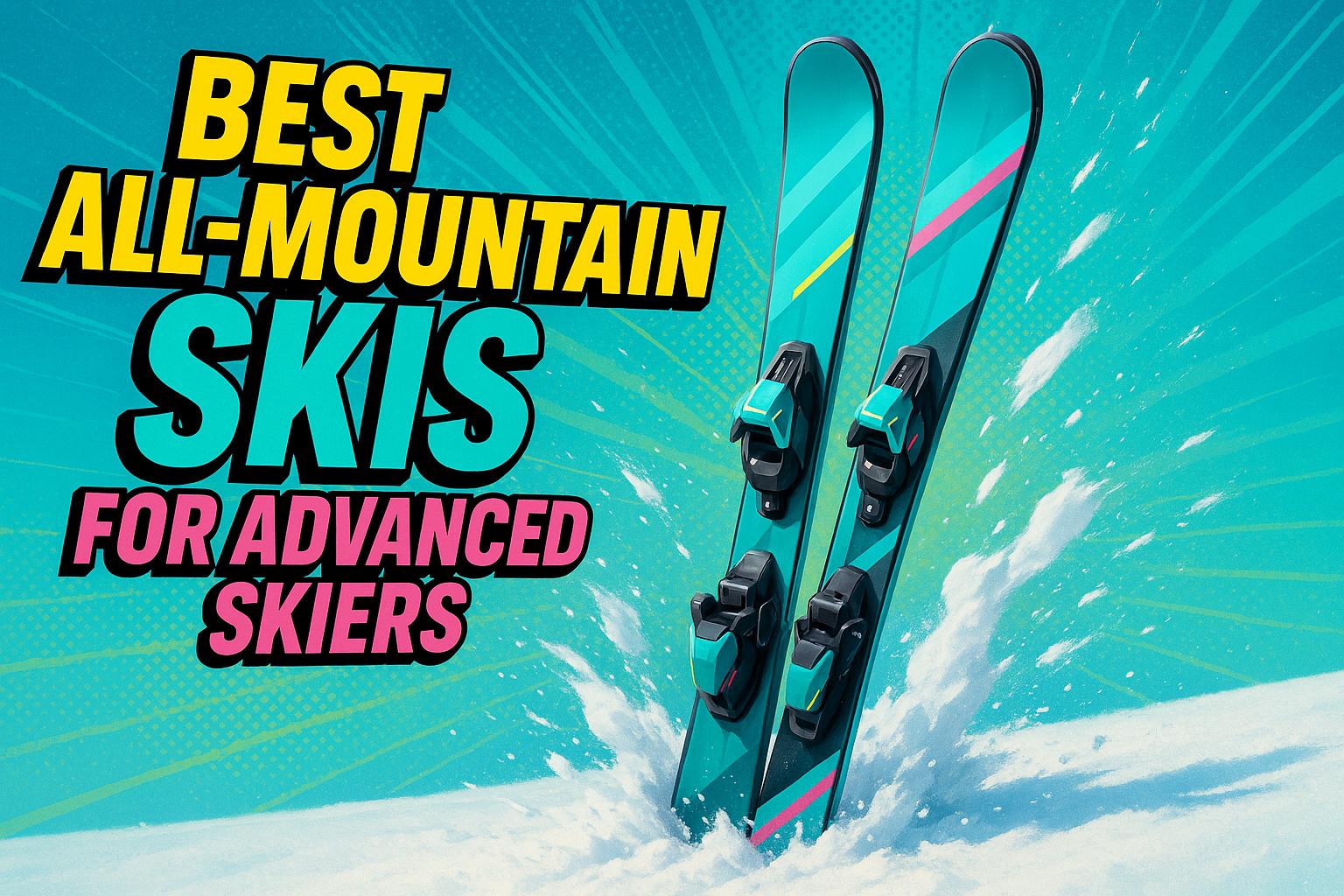










コメントを残す
このサイトはhCaptchaによって保護されており、hCaptchaプライバシーポリシーおよび利用規約が適用されます。